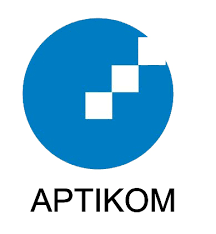Scholarship Acceptance Selection Using Neural Network Method
DOI:
https://doi.org/10.18196/eist.v1i4.16595Keywords:
algorithm neural network, data mining, scholarshipAbstract
Muhammadiyah University of Yogyakarta is one of the private tertiary institutions that provides scholarship programs. UMY provides scholarship programs for outstanding students and middle-lower class students. In the process of receiving a scholarship, UMY has two stages, namely registration and selection. In order to obtain a scholarship, students who register must be declared to pass administrative selection and meet the assessment component as a condition for students to be eligible for scholarships. In order to know the scholarship information received by students, data processing is needed, data processing is often referred to as data mining. This writing is done to predict prospective scholarship recipients using the Neural network algorithm. The methodology at this writing begins with searching for literature studies, choosing data mining methods, data collection, data processing, application and testing of models, results and conclusions. The data used at this writing are 2019 general scholarship data, GPA data, and organizational active information data. The attributes used are parental income, GPA, scholarships, qualification and non-qualification, and active organizational information. The caption attribute qualification and non-qualification is used as a label. At this writing the authors get an accuracy of 72.62%..
References
LPKA UMY. (2020, 4 26). LPKA UMY. Retrieved from https://lpka.umy.ac.id/beasiswa/).
Aprilla, Dennis, Baskoro, D., & Ambarwati, L. (2013). "Learn data mining with RapidMiner." Jakarta: Gramedia Main Library.
Dewi H, R., Yunita, & Indrawati, N. (2015). Design and Build a Scholarship Decision Support System Using the Naive Bayes Classiffier Method.
Fayyad, Usama, Piatetsky-Shapiro, G., & Padh. (1996). From data mining to knowledge discovery in databases. " AI magazine 17 (3): 37–37.
Frieyadie. (2017). USE OF SIMPLE ADDITIVE WEIGHTING METHOD FOR DETERMINING FEASIBILITY OF GIVING SCHOLARSHIP FOR ACHIEVING STUDENTS.
Han, J., Kamber, M., & Pei, J. (2011). Data Mining Concepts and Techniques.
Haryanto, D., Ramdani, C., Wahidah, W., Dinia, A., & Oktaviani, S. (2019). Design of Decision Support System for Determination of Scholarship Acceptance Using Artificial Neural Network (ANN) Method at Telkom Purwokerto Technology Institute.
Hermanto, & Rudi, R. (2010). Neural Network and Its Implementation in Data Mining.
Hofmann, Markus, & Klinkenberg, R. (2013). RapidMiner: Data mining use cases and business analytics applications. CRC Press.
Larose, Daniel T, & D. Larose, C. (2014). Discovering knowledge in data: an introduction to data mining. John Wiley & Sons.
Meinanda, Hanief, M., Annisa, M., & Mu, N. (2009). "Predicting undergraduate studies with an artificial Neural Network." Internetworking Indones. J 1 (2): 31–35.
Merdekawati, A. (2013). DECISION SUPPORT SYSTEM FOR RECEIVING SCHOLARSHIP USING ALGORITHM C4.5.
Nabahan, D., Wijaya, A., & William. (2019). Analysis of Factors that influence students in taking scholarships using the C4.5 algorithm.
Pauziah, U. (2016). STUDY COMPARISON OF C4.5 ALGORITHM, NA BVE BAYES AND NEURAL NETWORK IN SELECTING SCHOLARSHIP RECIPIENTS.
Permana, R., & Sahara, S. (2019). Support Vector Machine Method as a Determination of Student Graduation in Electronic Learning. Journal of the Equator Informatics 7.
Pujianto, A., Kusrini, & Sunyoto, A. (2018). DECISION SUPPORT SYSTEM DESIGN FOR SCHOLARSHIP RECIPIENT PREDICTION USING THE NEURAL NETWORK BACKPROPAGATION METHOD.
Rapidminer documentation. (2020, 4 26). Retrieved from https://docs.rapidminer.com/latest/studio /operators/blending/examples/sampling/ sample_stratified.html.
Ridwan, Mujib, Suyono, H., & M. Sarosa. (2013). Application of Data Mining for Student Academic Performance Evaluation Using the Naive Bayes Classifier Algorithm. " EECCIS Journal 7 (1): 59–64.
Romero, C., Ventura, S., & García, E. (2008). "Data mining in course management systems: Moodle case study and tutorial.
Siddiq, M., Tamin, R., & Azis, S. (2019). Data Mining Technique as Majors Support System Management with Classification Approach.
Singh, Yashpal, & Chauhan, A. (2009). "NEURAL NETWORKS IN DATA MINING." Journal of Theoretical & Applied Information Technology 5 (1).
Sumiah, A., Maulana, W., & Rinaldi, D. (2018). "Implementation of data mining for the recommendation of determining scholarship recipients using the Naive Bayes method".
Suryanto, Anwari Rahman, A., & Agus. (2017). "IMPLEMENTATION OF SCHOLARSHIP RECIPIENT SELECTION INFORMATION SYSTEM USING NAIVE BAYES CLASSIFIER METHOD".
Wibowo, a. (2017, 11 24). BINUS MTI. Retrieved from https://mti.binus.ac.id/2017/11/24/10- fold-cross-validation/



